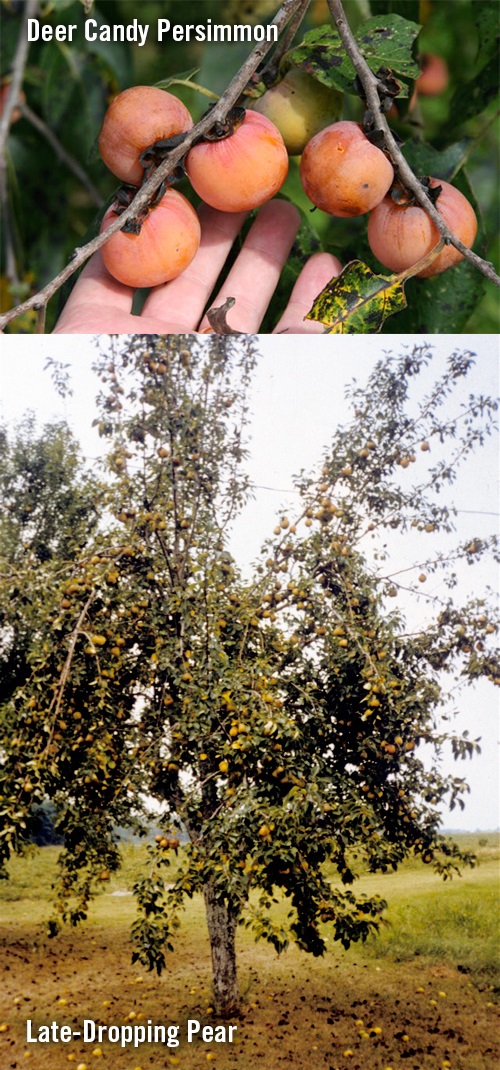 Managing your hunting land so that it provides the best possible nutrition and holds deer on your property throughout the hunting season can seem like an enormous project every year.
Managing your hunting land so that it provides the best possible nutrition and holds deer on your property throughout the hunting season can seem like an enormous project every year.That project can be much easier if your habitat plan included a mix of Chestnut Hill fruit trees. Chestnut Hill has lines of fruit trees ranging from ornamentals to commercial orchard foundation trees, and a big part of their research focuses on using fruit trees as long-lasting, high-quality wildlife food plots.
For deer hunters who manage their own property or lease, planting fruit trees can both increase the quality of nutrition available to deer and help hold them on your property throughout the season. Once established, the trees produce food every year at less cost than annual food plots – and for deer, a crop from fruit trees is like candy.
In fact, Chestnut Hill calls one line of its fruit trees the Deer Candy Persimmon Tree Collection. Within this collection are American varieties of grafted female trees selected for their ability to produce abundant crops. As bow hunters who have access to land with native persimmons know, deer find these fruits extremely tasty, and in season many deer will visit persimmons almost daily to check to see if more fruit has dropped.
One of the benefits of Chestnut Hill persimmons is that different varieties of their trees produce fruit over different time frames – a big advantage over wild persimmons for a deer hunter. For example, the Deer Candy Early Drop Persimmons bear fruit from late August through October. They can be planted with a mix of Chestnut Hill’s Deer Magnet Late Drop Persimmons, which drop fruit gradually from October through November.
In combination, these varies will maximize pollination and will result in fruit production for months. Even before the season starts, as deer are transitioning from summer to fall feeding and movement patterns, the Deer Candy Early Drop Persimmons condition them to make your property part of their core area. As the hunting season begins, the deer will continue to visit the property to eat the Deer Magnet persimmons as they reach their peak production.
These trees are easy to grow, hardy in a variety of climate zones, begin production in just a couple of years, and then continue to produce for years or even decades.
A great compliment to Chestnut Hill deer Candy and Deer Magnet persimmons is the Dr. Deer Pear Trees. Discovered by expert deer biologist Dr. James Kroll, these pear trees drop fruit through the fall as late as Thanksgiving. They too are easy to grow and will attract deer throughout the hunting season. They are grafted and self-fertile.
This year, as you think about how to improve your habitat management and your hunting seasons in the future, resolve to look into a less expensive, easier, long-term solution that deer love: Chestnut Hill persimmons and pear trees.
For more information about these and other trees as long-lasting and economical wildlife food plots, visit www.chestnuthilloutdoors.com.
